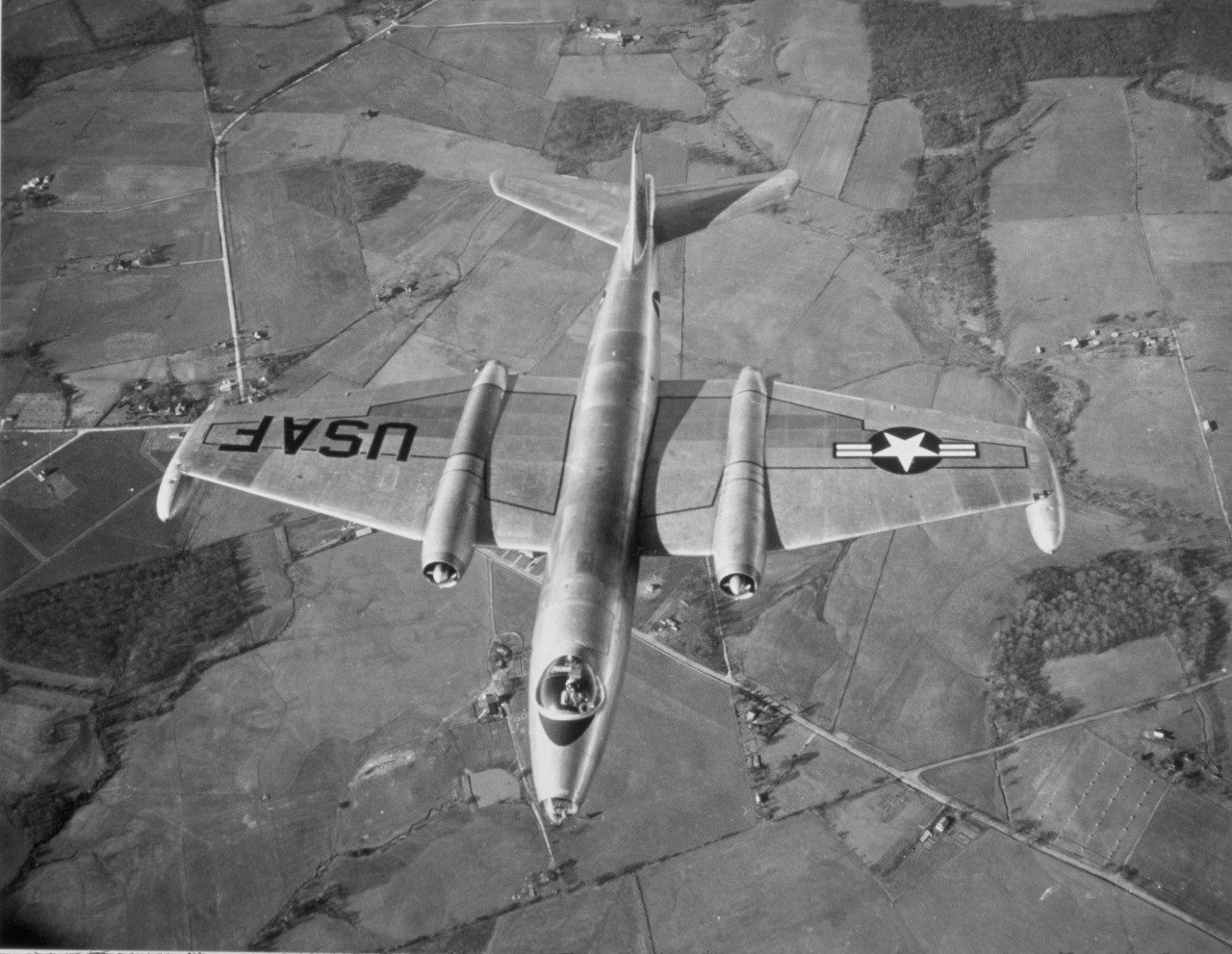On July 20, 1953, Martin Marietta’s chief test pilot O.E. “Pat” Tibbs climbed aboard the company’s inaugural B-57 bomber for its first official test flight—a day military officials had been anxiously awaiting for the previous three years.
During the summer of 1950, with hostilities erupting in Korea, the Air Force realized a pressing need for a new medium bomber – one that blended the agility of a fighter with the weapons-delivery capability of a bomber.
After several competitions and prototypes, the U. S. Air Force looked to England and selected a license-built version of the British Canberra, marking the first time since World War I that an aircraft of overseas design would be manufactured in the United States.
It was the Martin Company’s job as manufacturer to adopt the Canberra design into the aircraft the Air Force wanted, which the company did with remarkable precision, right down to compensating for the different size of threads on nuts and bolts used in the two countries and the inclusion of a revolutionary new rotary bomb rack that could be preloaded and easily swapped out to reduce rearmament times.

An Intruder In Vietnam
By the time the B-57s were called into combat Vietnam in 1964, Martin engineers had applied gloss black paint, added air-to-ground rockets, created a new bubble cockpit and installed ejection seats. Dubbed Night Intruders, they were nimble enough for low-level attacks yet sturdy enough to deliver bombs from high altitudes, becoming the first aircraft to successfully target Viet Cong outposts in the Republic of South Vietnam in 1965.
When equipped with forward-looking infrared, a laser-guidance system and low-light television cameras, B-57 weapons specialists could steer weapons to their targets through the pitch-black night sky. It was the world’s first successful launch of a “smart bomb” and was used throughout the war to disrupt the transfer of supplies and manpower along the Ho Chi Minh Trail.
To meet an urgent Air Force need for high altitude reconnaissance, Martin engineers created two new variants of the aircraft in 1955 called the RB-57D and WB-57F, which boasted a 110-foot wingspan, nearly double that of the basic design. The massive wings allowed the plane to soar up to 40,000 feet, monitoring Russian military activity and monitoring nuclear testing.

A Plane of Many Talents
Sources and Additional Reading
- Harwood, William B. Raise Heaven and Earth. New York: Simon & Schuster, 1993.
- Johnson, E.R. American Attack Aircraft Since 1926. Jefferson, NC: McFarland, 2008.




